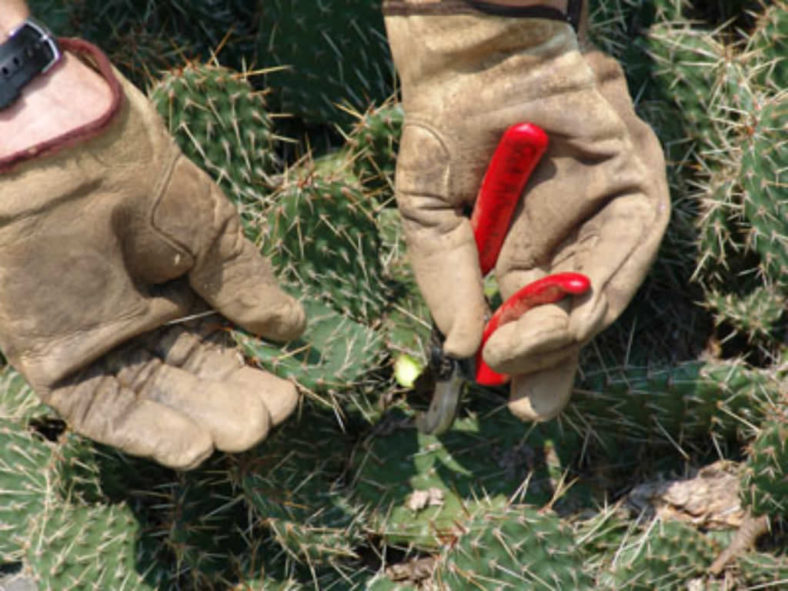Cacti are low-maintenance plants that generally thrive with neglect and do not require a lot of pampering. It might surprise you to find that cacti do need to be pruned occasionally. Cactus pruning is not always necessary, and when to prune a cactus plant will depend on why you are trimming it.
Can You Trim a Cactus?
New growers may ask, "Can you trim a cactus?" Most cacti do not need any form of shaping unless they have a huge limb that looks ready to tip the plant over. The main reasons for trimming a cactus are to remove parts of the root for new plants, remove offsets or pups for the same reason, rejuvenate a plant that has become too tall or leggy, and remove damaged material.
Cacti come in a wide range of forms. Pruning can enhance these forms while preventing overcrowding and increasing the chance of disease, mildew, and unhealthy plants. Opuntias have pads that serve as leaves, and these are easy to remove and can be used to start new plants. Columnar cacti may get too tall or spindly and require a judicious beheading to force branching or only thicker stems. Still, other cacti will produce flower stalks that are persistent and become ugly when dead. Removing these will restore the plant's beauty.
Trimming cacti has various purposes, but the good news is that you can use many of the removed parts to start new plants.

How to Cut Back a Cactus
The "how" of cutting back a cactus answers like a bad joke. The simple answer is cautious. Most cacti have some spines or prickles, which can be painful to encounter. Use thick gloves and wear long pants and sleeves when handling larger garden specimens.
The tool will depend on the size of the plant, but most will be suitable for pruners. Therefore, only the largest will require a saw. As with all pruning, ensure the tool is sharp and clean to avoid injuring the plant and reduce the chances of disease.
Remove limbs at the branch point, but be careful not to cut into the main stem. Pads or leaves may snap off; you can also use pruners to remove them.
For a big job like cutting back a columnar specimen, use a saw and remove the main trunk at the point where you want to see branching or at the desired height. Then, try to remove the stem at a growth point.
What to Do With Pruned-off Parts
Now for the fun part. Almost all the material you remove is salvageable, except for diseased or dead stems and leaves.
- Pads will root if laid on the soil and develop into a new plant of the same species.
- Cut stems and trunks should be allowed to callus at the end for several days, and then can be planted to create new cactus.
- Any offsets or pups that you cut away from the base of a specimen are new plants in their own right and should be potted up immediately.
- Dead flower stalks and leaves are compost, but some cacti varieties produce leaves on the flower stem, which can be treated the same way as the pads of other species. Most cactus parts will start rooting within a month.
Once you restore your initial cactus to its glory, you'll enjoy making more of the spectacular plant and can either increase your collection or give them away to family and friends.
Source: gardeningknowhow.com
Links
- Succupedia: Browse succulents by Scientific Name, Common Name, Genus, Family, USDA Hardiness Zone, Origin, or cacti by Genus